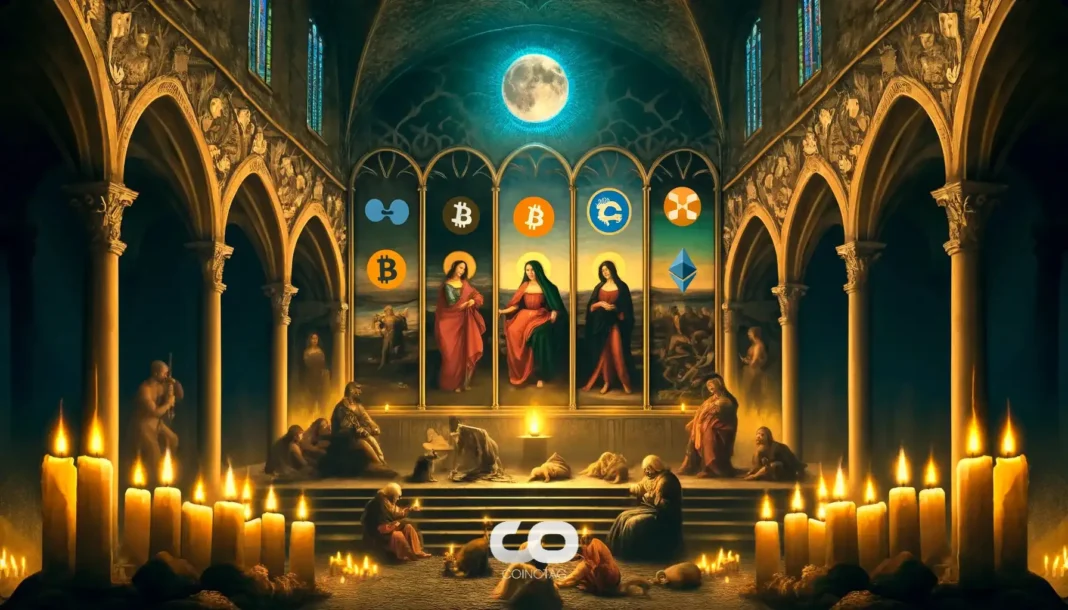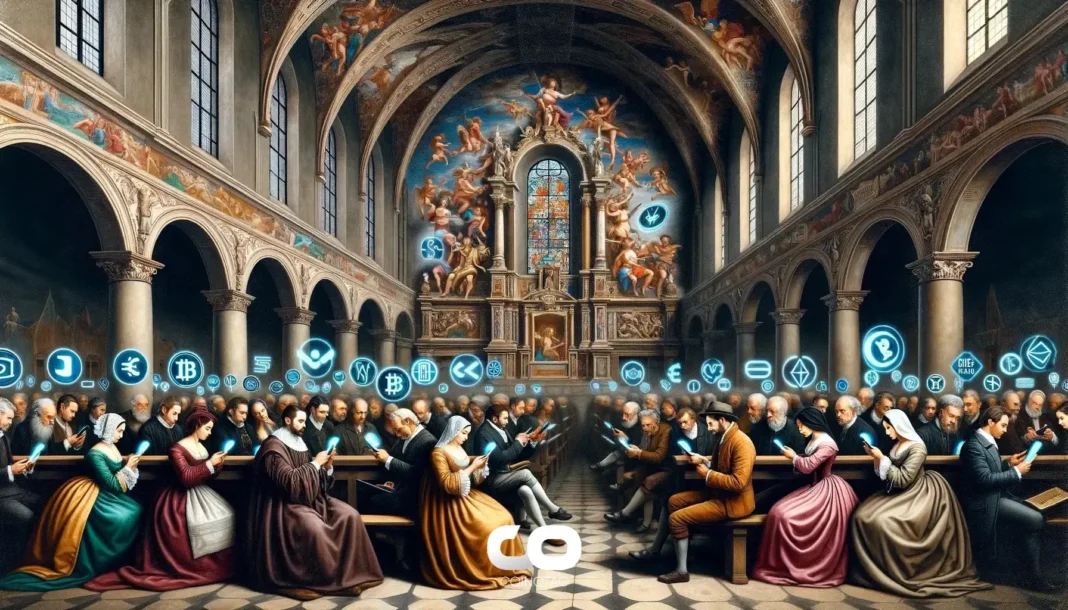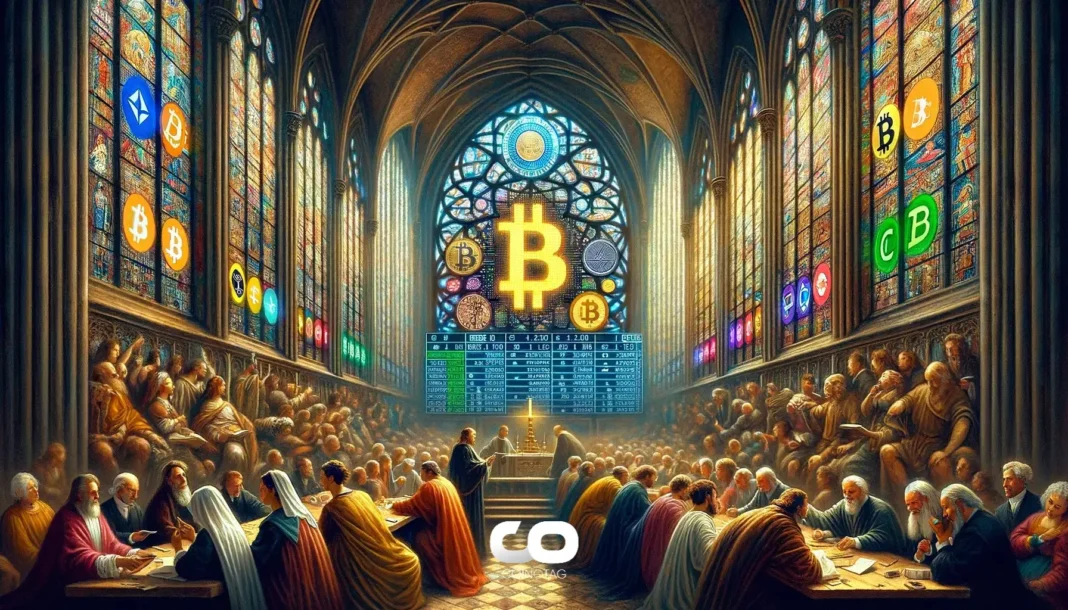| COINOTAG recommends • Exchange signup |
| 💹 Trade with pro tools |
| Fast execution, robust charts, clean risk controls. |
| 👉 Open account → |
| COINOTAG recommends • Exchange signup |
| 🚀 Smooth orders, clear control |
| Advanced order types and market depth in one view. |
| 👉 Create account → |
| COINOTAG recommends • Exchange signup |
| 📈 Clarity in volatile markets |
| Plan entries & exits, manage positions with discipline. |
| 👉 Sign up → |
| COINOTAG recommends • Exchange signup |
| ⚡ Speed, depth, reliability |
| Execute confidently when timing matters. |
| 👉 Open account → |
| COINOTAG recommends • Exchange signup |
| 🧭 A focused workflow for traders |
| Alerts, watchlists, and a repeatable process. |
| 👉 Get started → |
| COINOTAG recommends • Exchange signup |
| ✅ Data‑driven decisions |
| Focus on process—not noise. |
| 👉 Sign up → |
-
The Ethereum network has recently approved a significant increase in its gas limit, showcasing the community’s ongoing efforts to improve transaction efficiency.
-
This decision marks the first adjustment to the gas limit in nearly three years, indicating a pivotal moment in the network’s evolution amidst fluctuating cryptocurrency markets.
-
Ethereum creator Vitalik Buterin has previously advocated for higher gas limits in order to mitigate transaction fees, highlighting the necessity for ongoing discussions around this topic.
The Ethereum network has raised its gas limit for the first time in three years, potentially lowering transaction fees and improving performance amid market volatility.
Ethereum’s Historic Gas Limit Increase: Implications for the Network
The Ethereum (ETH) network recently experienced a pivotal shift as validators voted to increase the gas limit for the first time since the August 2022 hard fork that transitioned the network to a proof-of-stake model. This change elevates the gas limit from 30 million to 32 million, with approximately 52% of validators supporting the move according to data from Gaslimit.pics. The decision underscores the community’s recognition of the need for enhanced performance amidst growing transaction demands.
Understanding Gas Limits: What This Change Means
On Ethereum, gas refers to the computational energy needed to execute transactions, analogous to fuel in a vehicle. The increase in the gas limit implies that more complex transactions can be undertaken within a single block, which could ultimately lead to a decrease in gas fees—an important consideration for users interacting with the network. However, gas limits have historically stirred debate among community members, with some fearing that excessive increases could threaten the network’s stability.
The Risks and Rewards of Raising Gas Limits
Despite the potential benefits, raising the gas limit is not without its challenges. Research from the Ethereum Foundation suggests that limits exceeding 40 million could introduce bottlenecks and fail to propagate effectively across the network. These findings stress the importance of carefully balancing the need for capacity against the possibility of destabilizing the network’s performance.
| COINOTAG recommends • Professional traders group |
| 💎 Join a professional trading community |
| Work with senior traders, research‑backed setups, and risk‑first frameworks. |
| 👉 Join the group → |
| COINOTAG recommends • Professional traders group |
| 📊 Transparent performance, real process |
| Spot strategies with documented months of triple‑digit runs during strong trends; futures plans use defined R:R and sizing. |
| 👉 Get access → |
| COINOTAG recommends • Professional traders group |
| 🧭 Research → Plan → Execute |
| Daily levels, watchlists, and post‑trade reviews to build consistency. |
| 👉 Join now → |
| COINOTAG recommends • Professional traders group |
| 🛡️ Risk comes first |
| Sizing methods, invalidation rules, and R‑multiples baked into every plan. |
| 👉 Start today → |
| COINOTAG recommends • Professional traders group |
| 🧠 Learn the “why” behind each trade |
| Live breakdowns, playbooks, and framework‑first education. |
| 👉 Join the group → |
| COINOTAG recommends • Professional traders group |
| 🚀 Insider • APEX • INNER CIRCLE |
| Choose the depth you need—tools, coaching, and member rooms. |
| 👉 Explore tiers → |
Ethereum’s Volatile Performance and Market Dynamics
Recent days have seen Ethereum face extraordinary market volatility, recording a loss of more than 17.8% in a single day—its largest decline since May 2021. This downturn can be attributed to broader economic factors, including discussions surrounding tariffs proposed by former President Donald Trump. However, positive sentiment was observed when Ethereum rebounded following news of a pause in tariff plans impacting Canada, indicating that external economic events could significantly sway market behavior.
Prominent Figures Weigh In on Ethereum
Amid the turbulent market, Ethereum has garnered support from influential personalities, including Eric Trump, who recently suggested that now could be an opportune time to invest in ETH. Such endorsements may bolster public interest and investor confidence, which are critical amid uncertain market conditions.
| COINOTAG recommends • Exchange signup |
| 📈 Clear interface, precise orders |
| Sharp entries & exits with actionable alerts. |
| 👉 Create free account → |
| COINOTAG recommends • Exchange signup |
| 🧠 Smarter tools. Better decisions. |
| Depth analytics and risk features in one view. |
| 👉 Sign up → |
| COINOTAG recommends • Exchange signup |
| 🎯 Take control of entries & exits |
| Set alerts, define stops, execute consistently. |
| 👉 Open account → |
| COINOTAG recommends • Exchange signup |
| 🛠️ From idea to execution |
| Turn setups into plans with practical order types. |
| 👉 Join now → |
| COINOTAG recommends • Exchange signup |
| 📋 Trade your plan |
| Watchlists and routing that support focus. |
| 👉 Get started → |
| COINOTAG recommends • Exchange signup |
| 📊 Precision without the noise |
| Data‑first workflows for active traders. |
| 👉 Sign up → |
Future Outlook: Ethereum’s Upcoming Developments
Looming on the horizon, Ethereum’s anticipated hard fork, Pectra, scheduled for March 2025, promises to double the capacity for layer two solutions, thus enhancing network scalability and efficiency. Vitalik Buterin’s insights into this upgrade reflect a proactive approach towards further advancing Ethereum’s technological foundation and its adaptability in an evolving cryptocurrency landscape.
Conclusion
The recent increase in Ethereum’s gas limit presents both opportunities and challenges for the network. While it may reduce transaction costs and support additional functionalities, careful management will be necessary to avoid potential pitfalls that could destabilize its operations. As Ethereum navigates its next developments, keen attention to market dynamics and community feedback will be crucial in shaping the future of this influential blockchain.
| COINOTAG recommends • Traders club |
| ⚡ Futures with discipline |
| Defined R:R, pre‑set invalidation, execution checklists. |
| 👉 Join the club → |
| COINOTAG recommends • Traders club |
| 🎯 Spot strategies that compound |
| Momentum & accumulation frameworks managed with clear risk. |
| 👉 Get access → |
| COINOTAG recommends • Traders club |
| 🏛️ APEX tier for serious traders |
| Deep dives, analyst Q&A, and accountability sprints. |
| 👉 Explore APEX → |
| COINOTAG recommends • Traders club |
| 📈 Real‑time market structure |
| Key levels, liquidity zones, and actionable context. |
| 👉 Join now → |
| COINOTAG recommends • Traders club |
| 🔔 Smart alerts, not noise |
| Context‑rich notifications tied to plans and risk—never hype. |
| 👉 Get access → |
| COINOTAG recommends • Traders club |
| 🤝 Peer review & coaching |
| Hands‑on feedback that sharpens execution and risk control. |
| 👉 Join the club → |
| COINOTAG recommends • Members‑only research |
| 📌 Curated setups, clearly explained |
| Entry, invalidation, targets, and R:R defined before execution. |
| 👉 Get access → |
| COINOTAG recommends • Members‑only research |
| 🧠 Data‑led decision making |
| Technical + flow + context synthesized into actionable plans. |
| 👉 Join now → |
| COINOTAG recommends • Members‑only research |
| 🧱 Consistency over hype |
| Repeatable rules, realistic expectations, and a calmer mindset. |
| 👉 Get access → |
| COINOTAG recommends • Members‑only research |
| 🕒 Patience is an edge |
| Wait for confirmation and manage risk with checklists. |
| 👉 Join now → |
| COINOTAG recommends • Members‑only research |
| 💼 Professional mentorship |
| Guidance from seasoned traders and structured feedback loops. |
| 👉 Get access → |
| COINOTAG recommends • Members‑only research |
| 🧮 Track • Review • Improve |
| Documented PnL tracking and post‑mortems to accelerate learning. |
| 👉 Join now → |







